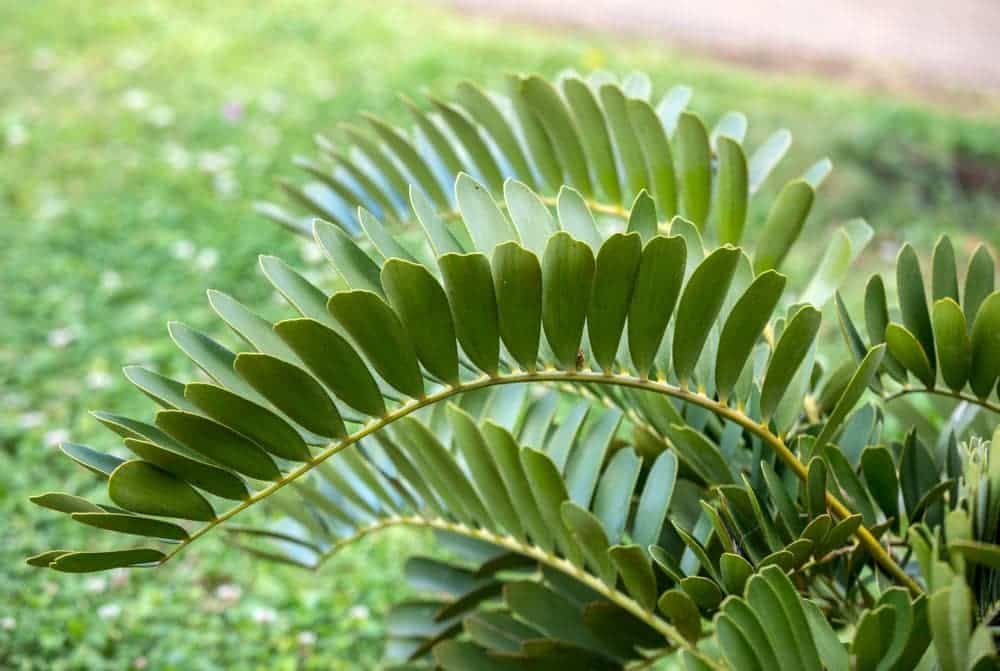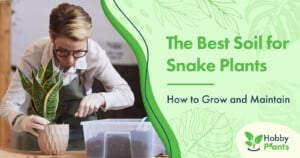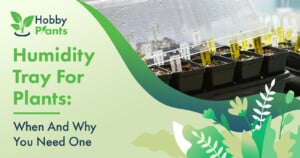Cardboard Palm, also known as Zamia furfuracea, is rumored to have been around the same time as dinosaurs.
This misnomer was named for its palm-like appearance but had no relation to any palm tree type. This plant is native to Mexico and only survive in regions that provided full light and well-drained soils.
Cardboard Palm Growth and Care Guide
1. Plants Specifications
The Cardboard Palm is not cardboard, nor is it a palm. It is part of the cycadophyte lineage. It is a robust plant that can give any landscape a tropical feel without the high maintenance of tropical plants. It can be recognized by its short crown that resembles palm fronds and chunky trunk that collects and holds water during times of droughts.
It gets its name “cardboard” from its large leathery like leaves. It can reach anywhere from 3 to 4 feet tall and measure in the wild at roughly 6 feet in diameter.
2. Climate
The Cardboard Palm’s preferred climate is that of mild heat and dry or salty air and thrives in areas that are sandy and close to the beach. While being mostly a dry weather plant, doing well in soil that quickly drains, it has adapted to be a very sturdy house plant and can be a perfect first-time plant for anyone who wants to start their living collection. It can also be an excellent addition for anyone who wants to add color without fear of forgetting to water.
3. Soil
Cardboard Palms tend to do better in bare soil that does not retain water and has proper drainage. When planting inside a home, make sure that pots have adequate drainage, and no specialized soil is needed; just a raw mix of potting soil and sand is more than enough.
4. Watering Techniques
Being drought resistance, Cardboard Palms are sensitive to overwatering. It is best for the plant if it is only water once a week or when the soil feels dry. This fact is beneficial to first-time plant owners or people who are not good at keeping plants alive.
5. Light Requirements
Cardboard Palm enjoys full sunlight for most of the day. It needs to be planted in the part of the yard that gets maximum sunlight. Alternatively, if you are growing this inside you should pick the window that gets the most amount of sunlight for most of the day.

6. Temperature
This plant prefers to be kept at 65-75 degrees but can survive in temperatures as low as 25 degrees. Making it a unique pick if you find that you need to spruce up a desert environment.
7. Germination
Cardboard palm seeds are reasonably simple to germinate. There is no long list of steps. Simply place the seeds in the ground about 8 feet apart and ½ inch down. Water regularly but don’t overwater, making sure that the earth is not left soggy. The seeds will take roughly 3 to 4 months to sprout.
8. Potting
When potting this plant, you first want to consider the size of the container. While it might not get as big inside, it is still a short intrusive plant. You might want to consider a custom box or planter that is bigger than the plant itself, so there is not too much spillage. You will need to create a mixture of potting soil and sand to ensure you have full drainage. The plant must be placed in a sunny window and watered passively.
9. Pruning
If you notice that your plant is getting a little wild, it is easy to prune it back. Just trimming the outlining branches when needed will keep it looking well maintained and organized. Though you should not be surprised if the plant takes over when left unattended.
10. History of Species
The Cardboard Palm is a close relative of the ancient cycads living in the time of prehistoric dinosaurs. Though this species is not from millions of years ago, it does lend a wild, tropical feel when revamping a garden area.
More like this: Holly Fern Growth and Care Guide
Do Cardboard Palms Create Seeds?
The answer is no. Cardboard Palms are part of a group of plants called gymnosperms. These specific plants produce cones that are both male and female. They fertilize the seeds within the cone, and once they reach maturity, the cone releases the seeds to start the growth cycle again. These seeds are the size of a black bean and are a bright red color.
Are Cardboard Palms Poisonous?
When planting Cardboard Palms, one must do so with extreme caution. This plant is highly poisonous to cats and dogs and can cause an array of ailments that include abdominal pain, dark stools, jaundice, increased thirst, vomiting, and death.
If you suspect that your animal has come in contact and ingested a part of a Cardboard Palm, it is recommended to seek veterinary assistance as soon as possible.
Common Problems
Common problems with this plant can include root rot and a disease known as red scale. Root rot is entirely preventable by avoiding over-watering and picking an area or pot that allows proper drainage. If water sits on the roots for too long, the roots will rot, and the plant will die.
On the other hand, plant scale is harder to control and can be devastating to your plant. Plant scale is an infestation of the plant, by small insects with long barbed teeth. This infestation can leave your plants looking bare and browning leaves. The right pesticide can be used to clear the plant of this problem.
Also read: Mediterranean Fan Palm Care & Growing Guide
Conclusion
When planting a garden, it can be challenging to find plants that can be placed in the filer spaces to take up space. They can be just as if not more high maintenance then the flowers that are present.
This plant is unique because it flourishes in modest soil and low water but grows to cover large areas and can be left without maintenance for long periods. With its low maintenance seed propagation, it is easy to cover large areas with several plants at a low cost.
This plant is beneficial to areas that encourage drought-resistant yard and can still add a tropical beauty without the hassle.
Keep reading:
Victoria is the owner and main author of hobby plants. She loves spending her free time in her garden planting and taking care of her plants. Victoria hopes you enjoy the content here!
![Majesty Palm Plant Care: [Complete Beginner's Guide] Majesty Palm Plant Care: [Complete Beginner's Guide]](https://www.hobbyplants.com/wp-content/uploads/2022/08/majesty-palm-care-300x158.jpg)
![Why Does My Majesty Palm Have Brown Tips? [EXPLAINED] Why Does My Majesty Palm Have Brown Tips? [EXPLAINED]](https://www.hobbyplants.com/wp-content/uploads/2022/08/majesty-palm-brown-tips-300x158.jpg)
![What Causes Brown Tips on A Ponytail Palm? [EXPLAINED] What Causes Brown Tips on A Ponytail Palm? [EXPLAINED]](https://www.hobbyplants.com/wp-content/uploads/2022/08/brown-tips-on-ponytail-palm-300x158.jpg)




![Mother Of Thousands Plant [Complete Plant Care Guide] Mother Of Thousands Plant [Complete Plant Care Guide]](https://www.hobbyplants.com/wp-content/uploads/2022/07/mother-of-thousands-plant-300x158.jpg)
![How Often Should You Water Pothos? [Complete Care Guide] How Often Should You Water Pothos? [Complete Care Guide]](https://www.hobbyplants.com/wp-content/uploads/2022/07/how-often-to-water-pothos-300x158.jpg)
![Can Snake Plants Live Outside? [COMPLETE CARE GUIDE] Can Snake Plants Live Outside? [COMPLETE CARE GUIDE]](https://www.hobbyplants.com/wp-content/uploads/2022/08/can-snake-plants-live-outside-300x158.jpg)
![Exotic Angel Plant Care: [Complete Beginner's Guide] Exotic Angel Plant Care: [Complete Beginner's Guide]](https://www.hobbyplants.com/wp-content/uploads/2022/08/exotic-angel-plant-care-300x158.jpg)
![Do Coleus Like Sun Or Shade: [Complete Care Guide] Do Coleus Like Sun Or Shade: [Complete Care Guide]](https://www.hobbyplants.com/wp-content/uploads/2022/08/coleus-sun-or-shade-300x158.jpg)